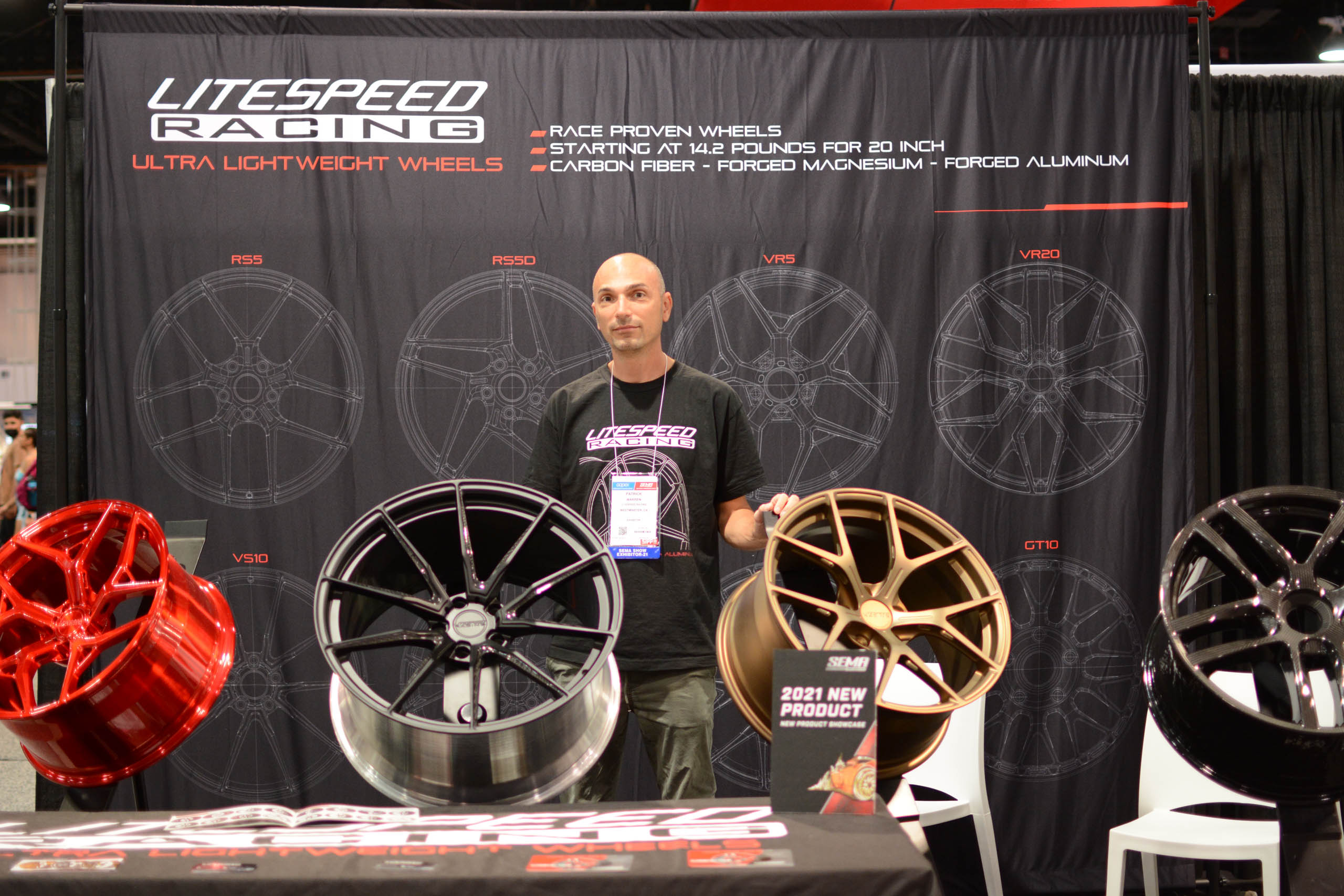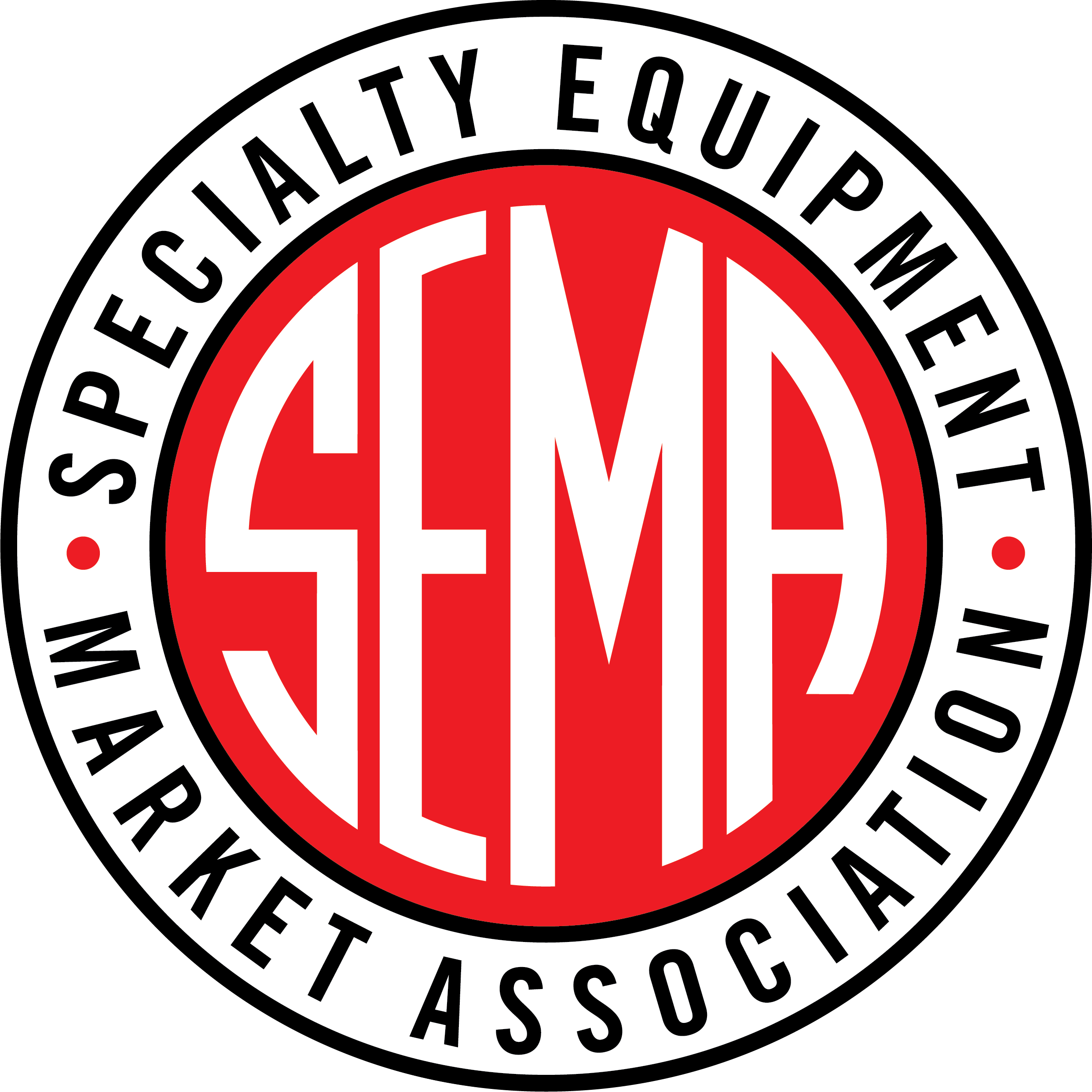Wheel and Tire Trends

Can Sales Keep Rolling as the World Enters a “New Normal”?
Traditionally, wheels and tires are among the first upgrades that vehicle owners make to their cars or trucks. In fact, SEMA Market Research has identified them as “gateway drugs” to further vehicle modification, making them key products driving consumer engagement with the aftermarket.
According to the “2022 SEMA Market Report,” the market size for performance and special-purpose tires, off-road and oversize tires and custom wheels grew to $2.79 billion, $2.13 billion and $1.55 billion, respectively, through 2021. While those numbers imply that the wheel and tire category stayed largely buoyant through the pandemic, some market observers caution that challenging undercurrents may lay ahead—especially for the tire industry.
The Tire Market: Grappling With Uncertainties
Last year’s “Insider’s Guide to the Tire Industry in 2021” report from Tire Industry Research (TIR) painted a picture of a global tire market in post-pandemic recovery but “still facing multiple crises.”
“Those largely relate to upstream forces such as transport logistics, materials availability and currency exchange rates,” TIR said in its analysis. “Energy costs, raw materials costs and logistics costs are rising fast. There are shortages of truck drivers in many parts of the world. Some tire factories—especially in the first quarter—have had to close or go on short-time working due to shortages of raw materials. Currently, high absentee rates have started to limit output.”
Tire Industry Association (TIA, booths #40067 and #41067) Chief Technical Officer Kevin Rohlwing noted at last year’s SEMA Show that manufacturing interruptions coupled with a sudden rebound in consumer demand were putting additional pressures on markets.
“When the tire manufacturers shut down their plants because of COVID, tire inventories went down,” Rohlwing observed. “Then the return to work and the ‘new normal’ came faster than expected, so you’re in a situation right now where there are some backlogs. Tires aren’t something that you can just build on demand. It’s not one-size-fits-all manufacturing.”
Rohlwing also underscored the global nature of tire manufacturing. Sourcing raw materials from Southeast Asia, South America and Europe puts multiple constraints even on U.S.-based tire makers. Then there’s also the labor shortage and related costs to consider.
According to Joe Podlovits, vice president of marketing and product development for The Wheel Group (booth #44037), political and financial instabilities in source countries further roiled the tire market. But the greatest challenge for tire makers going in to 2022 was simply moving inventory through U.S. ports. He said the industry would be “in a better inventory position on tires” once supply-chain issues settled down.
According to Jackson Marketing Group Director of Business Development Todd Steen, who chairs SEMA’s Wheel & Tire Council (WTC), a trend to watch will be the increasing number of companies and equity groups consolidating house brands to gain capital or leverage buying power.
“There’s a demand to grow,” he explained. “I truly believe that you’re just going to continue seeing mergers and acquisitions happening as those demands keep going so the growth can be there.”
Changing Buying Habits
Meanwhile, as manufacturers wrestled with global challenges, retailers were facing many of their own on the home front.
“The buying habits of the tire industry are antiquated because tire sizes are kind of a mystery to some people,” Steen said.
Podlovits saw that phenomenon playing out in the ongoing growth of online purchasing, which offers consumers a greater sense of convenience.
“In my opinion, COVID really accelerated that, and I think that the industry would agree it has taught people a new way to buy,” he observed. “They’ve become very comfortable with the idea of buying online. I think there’s also that Amazon mentality of ‘I want my products and I want them today.’”
Jared Kugel, founder and CEO of Tire Agent, is among the growing number of entrepreneurs who have entered that online retail space. His company offers consumers major-brand tires at a savings and then ships those tires within two to four business days directly to their homes or to an installer of their choice.
“I think brick-and-mortar will always have a dominant space,” he explained. “Mobile is supplementary, but it’s not a replacement. Brick-and-mortar will always have a place because people will always need it, whether they want to get oil changes or they want to get wheel alignments or mechanical work.”
Nevertheless, Rohlwing sees current supply-chain issues as well as the growth of direct-to-consumer sales and a rising tide of government regulation putting a squeeze on tire retailers. He cites California’s move to mandate low-rolling-resistance replacement tires as a prime example. That alone will have devastating effects on the small dealers while severely limiting consumer options, he said.
“Big-box retailers and the multi-chain national retailers and the warehouse clubs will gain a distinct price advantage over small dealers,” he explained, adding that modernizing operations, broadening products and services, and taking advantage of ongoing training will become more important than ever to remaining competitive.
Meanwhile, on the technology side, industry sources expect further improvements in tire-pressure monitoring systems and continued evolution toward “intelligent tires” that can track wear and other tire metrics. As electric vehicles become more ubiquitous, tire design and compounds will undoubtedly morph to match their unique grip and low-rolling-resistance requirements as well. In fact, Steen foresees a future where tires and wheels become integrated, consumable units.
As for more immediate market trends, with OEMs upping their small-truck lineups, larger-diameter wheels and tires are a sure bet, along with the lifting, accessorizing and suspension work that goes with them.
“I’m definitely seeing people buy more Tier 1 and Tier 2 [product] than I’ve ever seen,” Kugel observed. “I think what’s interesting is with more people buying vehicles today, they’re taking a lot more pride in their vehicles.”

From 2020 through 2022, both off-roading and overlanding surged in popularity, raising demand for trail- and road-capable wheels and tires for trucks, Jeeps, SUVs and even some CUV and van applications.
The Wheel Market: Ready to Roll?
Although it has faced its own supply-chain issues, the wheel market appears relatively stable compared with the tire segment. In fact, like many aftermarket categories, wheels seem to have gotten a boost from pandemic-weary consumers seeking escape from their isolation.
“There was this sweeping movement of people getting back outdoors,” Podlovits said. “That’s probably been one of the most enjoyable things to watch: families getting together, buying products, going out, camping—even people who just hadn’t done that before. There’s been that itch to vacation.”
Reflecting this trend, Podlovits said last year The Wheel Group was seeing increased demand for its low-pressure cast wheels in 15- and 17-in. diameters.
“That indicates more of what we would consider outdoors, overland or adventure-type builds,” he explained, adding that his company also had seen a huge increase in SUV applications—namely Subaru.
Wheel manufacturing has become more and more competitive over the past decade. However, smaller wheel makers are still finding niches of opportunity, even amid the chaos wreaked by the recent pandemic.
“We all know that when you modify a car, you modify a wheel, which makes it a very competitive market to be in,” said Litespeed Racing CEO Patrick Warren. “There’s a lot of marketing money being put out there and a lot of wheels being sold solely based on brand awareness. It’s been a great thing for us to win the [2021] New Product Award, because Litespeed Racing is a smaller company that really focuses on the product but doesn’t have as much financing for big marketing compared to the other really big names.”
In particular, CAD software, access to manufacturing and a creative eye have allowed a number of smaller companies to deliver highly customized wheels to high-end consumers.
Meanwhile, Podlovits said that the wheel market can expect to see further innovations and manufacturing refinements in the coming years, especially in the area of flow-forming, which he believes will become the predominant production style for mid- and larger-size wheels. But the real challenge will be in the retail space, where brick-and-mortar shops will have to become more nimble to keep up with the changing consumer landscape.
“If you’re a traditional wheel and tire shop, you’ve got to look at easy bolt-on accessories for installations,” he advised. “Customers are doing more to their vehicles quicker than ever today, so if a customer is buying a wheel and tire package—and bumper, truck-rack and storage solutions—they want that done in one place and one trip. If a shop is not offering that, they’re going to lose a customer to a competitor.”
Staying on top of wheel and tire trends, technologies and new products will be just as vital. “Customers have that information at their fingertips today and are very aware of what’s new and what’s coming out,” Podlovits explained. “If a dealer is not aware of what customers are seeing and asking for, they’re going to be left behind.”

Industry experts believe that supply-chain ripples will continue to afflict the tire industry—and to a lesser degree the wheel market—going into 2023. The question is how much soaring costs of materials, production, shipping, warehousing and labor will ulti


